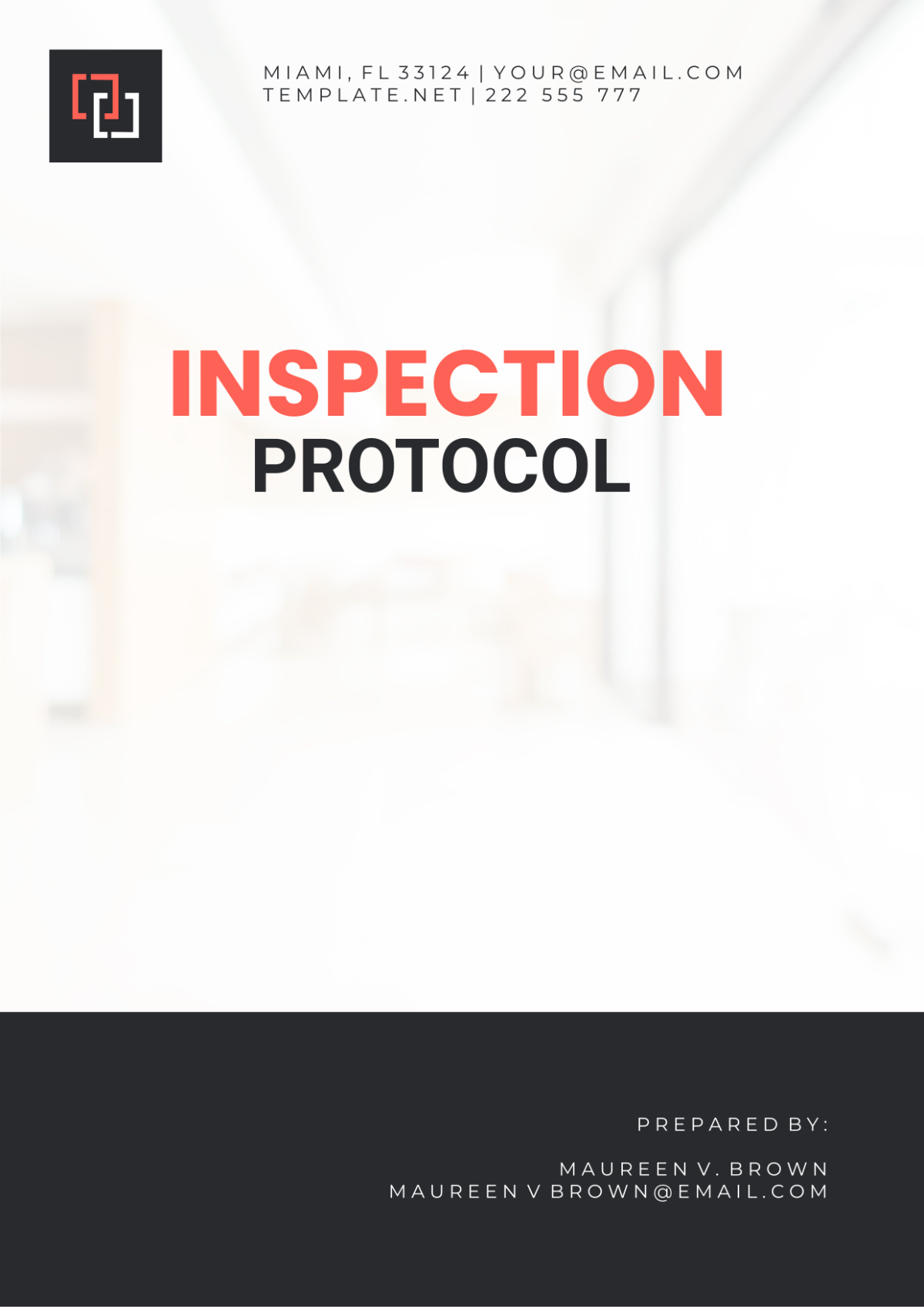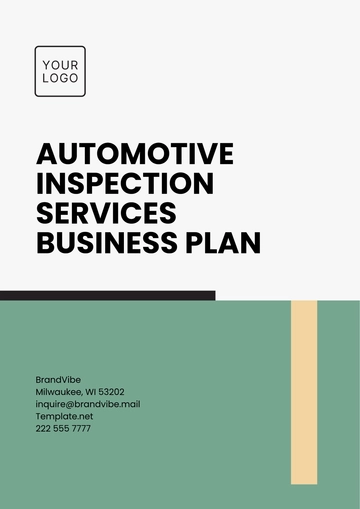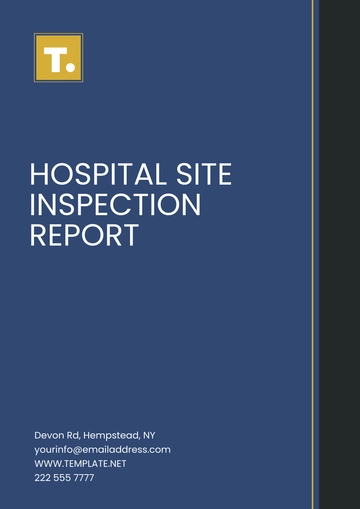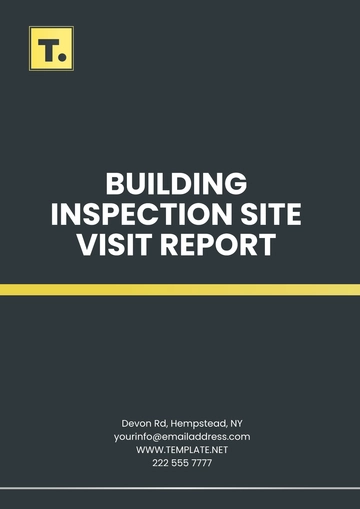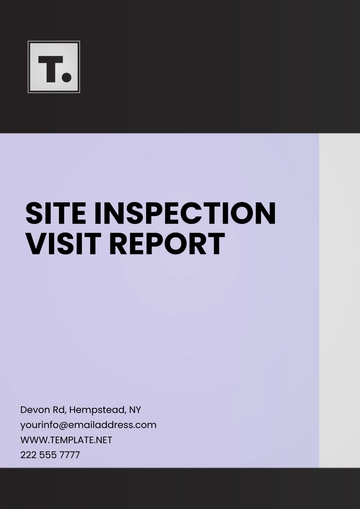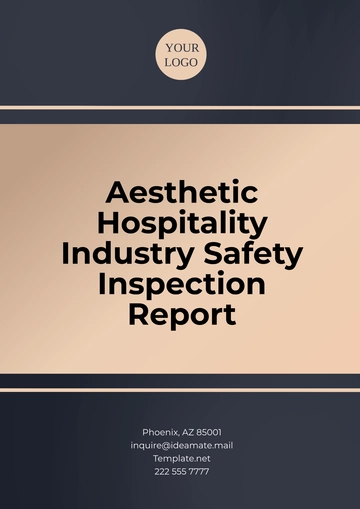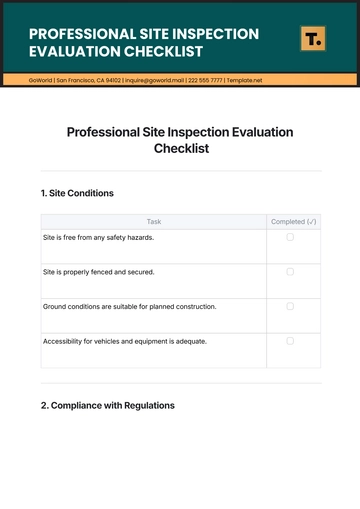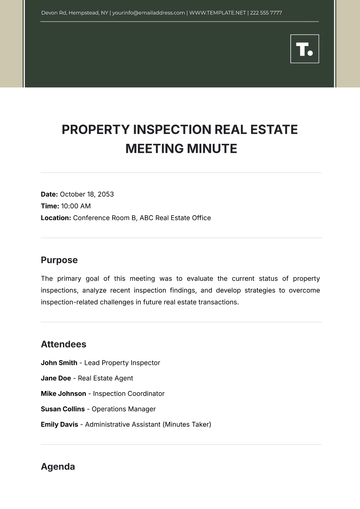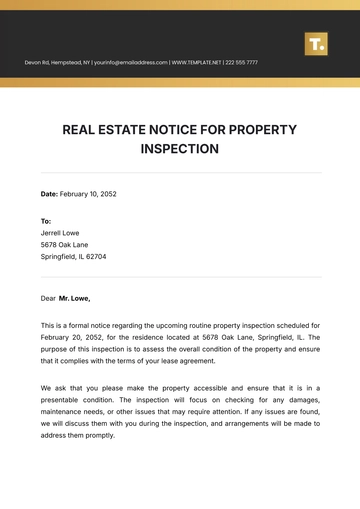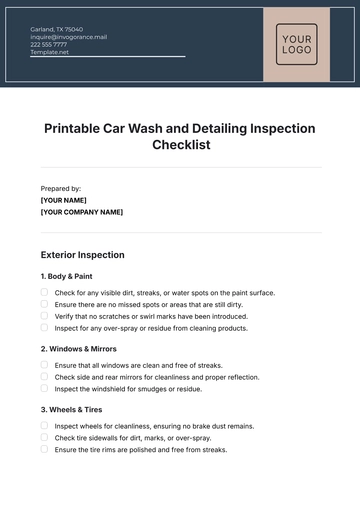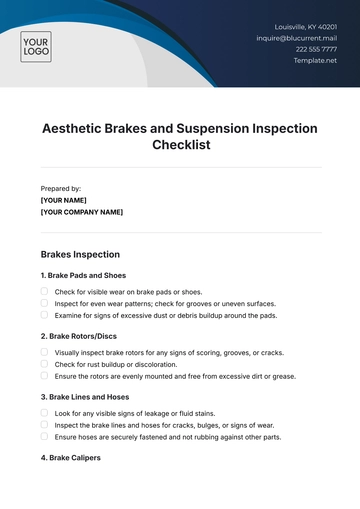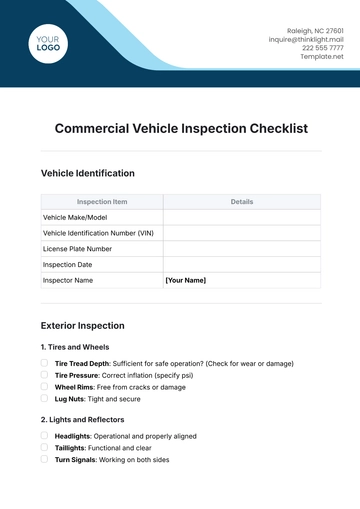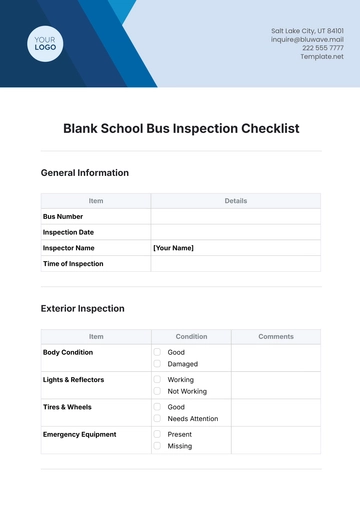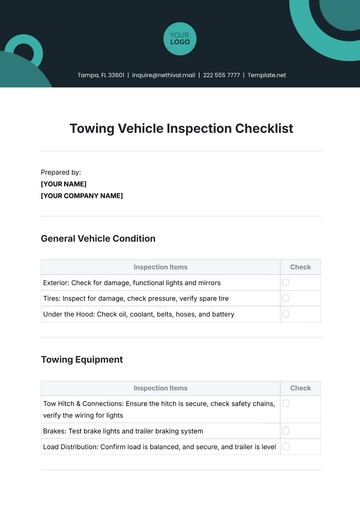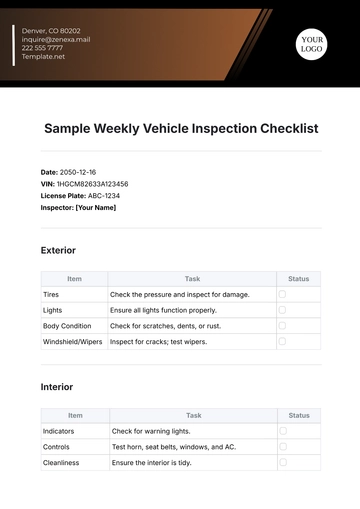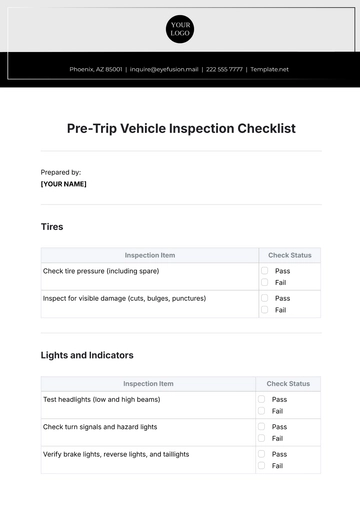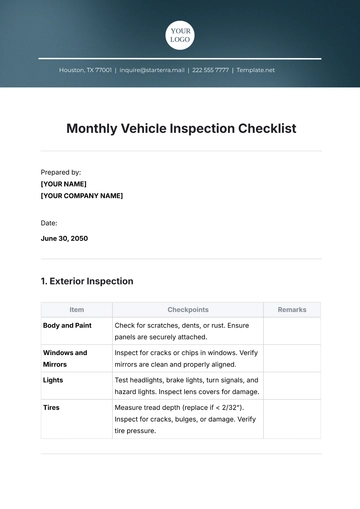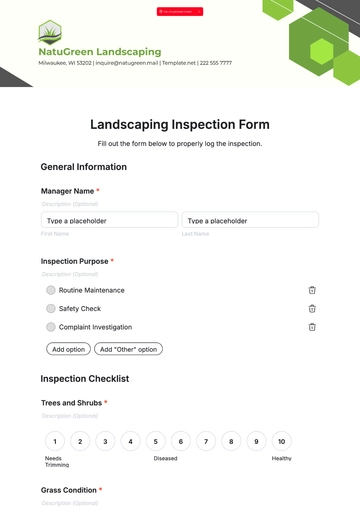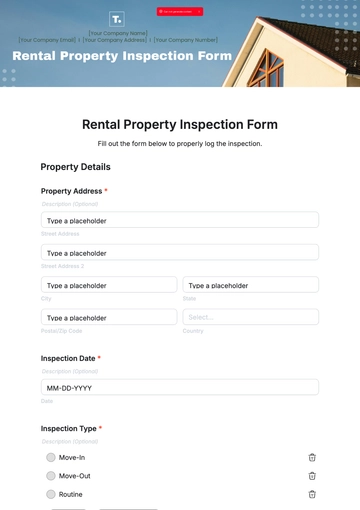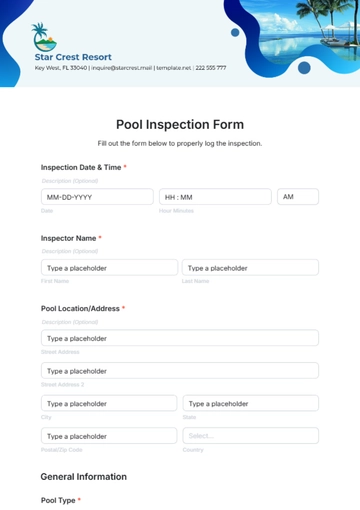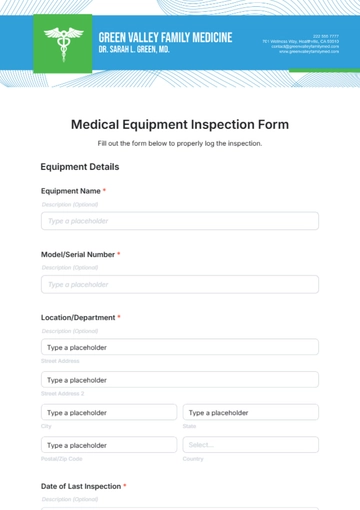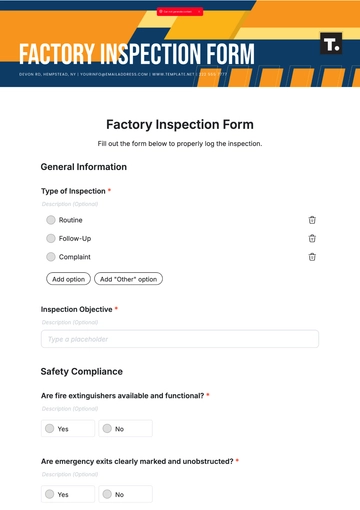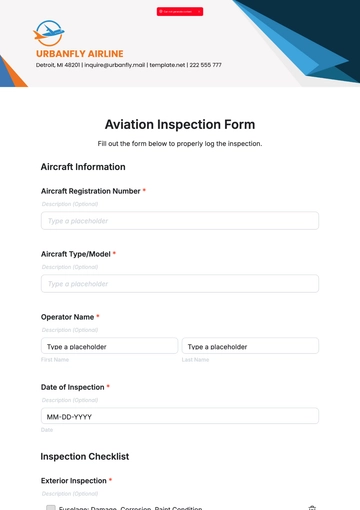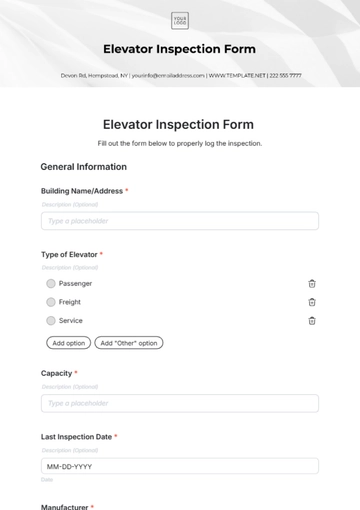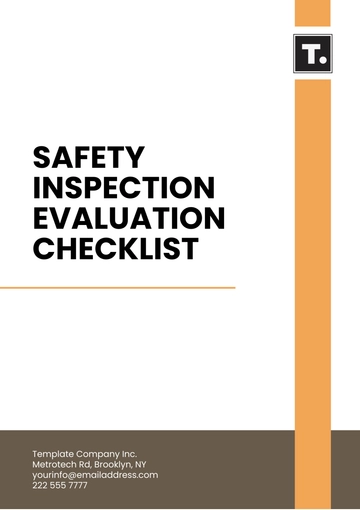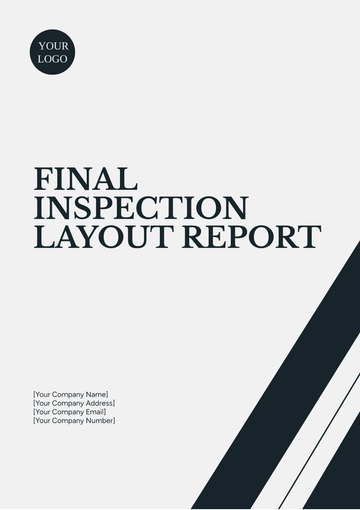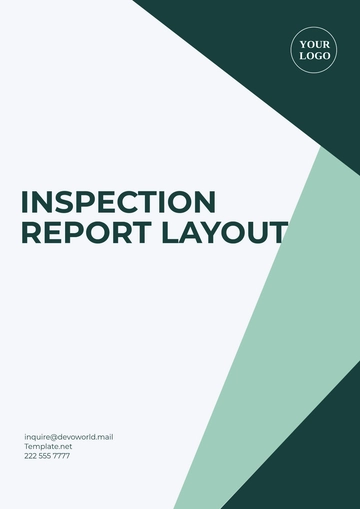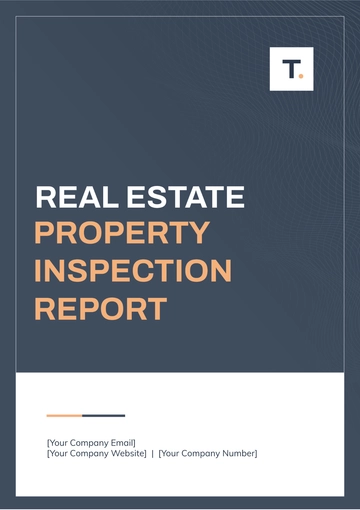INSPECTION PROTOCOL
Name: | [YOUR NAME] |
|---|
Company: | [YOUR COMPANY NAME] |
|---|
Department: | [YOUR DEPARTMENT] |
|---|
Date: | [DATE] |
|---|
I. Introduction
This Inspection Protocol has been meticulously designed, with its primary aim being to stipulate a methodical framework that allows for the effective undertaking of inspections. Furthermore, it is also meant to provide a swift process for the distribution of outcomes resulting from the inspections to our esteemed clients. Additionally, it goes into detail mapping the crucial steps to follow and setting down significant guidelines that need to be adhered to. All this contributes to securing a comprehensive and clear-cut process of inspection, which not only meets but eventually surpasses industry standard norms.
II. Scope
The protocol that is being referred to within this context is applicable and relevant to every single inspection that is conducted by the designated Inspector. These inspections span across a range of different sectors. Some of the sectors that are included within this scope are manufacturing, construction, and healthcare which are mentioned specifically. However, it should be clearly noted that the applicability of the protocol is not merely limited to these sectors. There are indeed various other sectors to which this protocol applies too, even though they may not have been explicitly mentioned here.
III. Objectives:
Ensure consistency and standardization in inspection procedures.
Provide clear guidance for inspectors during inspections.
Facilitate timely communication of inspection findings to clients.
Enhance transparency and accountability in the inspection process.
IV. Equipment and Materials
Inspection Tools:
Measuring devices (e.g., tape measures, calipers, rulers)
Leveling instruments (e.g., spirit levels, laser levels)
Inspection mirrors (for viewing hard-to-reach areas)
Flashlights or headlamps (for inspecting dimly lit areas)
Thermometers or thermal imaging cameras (for temperature checks)
Safety Equipment:
Personal protective equipment (PPE) such as safety helmets, gloves, safety glasses, and high-visibility vests
Respiratory protection (e.g., dust masks, respirators) if working in environments with airborne hazards
Fall protection equipment (e.g., harnesses, lanyards) for working at heights
First aid kit with basic medical supplies for addressing minor injuries or emergencies
Documentation and Recording:
Inspection checklists or forms for recording observations, findings, and measurements
Digital or analog cameras for documenting visual evidence or capturing images of inspection sites
Notebooks, pens, and markers for taking notes and annotating inspection documents
Voice recorders or dictation devices for verbal documentation of observations or interviews
Communication Devices:
Two-way radios or walkie-talkies for communication between inspectors and team members
Mobile phones or smartphones with reliable network connectivity for making calls, sending messages, and accessing digital resources or reference materials
Tablets or laptops for accessing electronic documentation, data entry, or reporting tools
Access Equipment:
Ladders or step stools for accessing elevated areas or overhead structures
Scaffoldings or work platforms for safe access to areas at height
Extension poles or telescopic tools for inspecting hard-to-reach areas from a distance
Personal fall protection equipment (e.g., harnesses, anchor points) when working at heights.
IV. Procedure
Step | Action |
|---|
Pre-inspection Preparation | Review pertinent documentation and information related to the inspection. Coordinate with relevant parties to schedule the inspection and secure necessary permissions. Prepare inspection tools, equipment, and checklists.
|
On-site Inspection | Conduct a comprehensive assessment of the designated area or facility. Adhere strictly to safety protocols and regulations. Document all observations and findings accurately.
|
Data Analysis and Evaluation | Analyze collected data to assess compliance with standards and regulations. Objectively evaluate findings and identify areas for improvement or non-compliance. Verify the accuracy of inspection results.
|
Report Generation | Prepare a detailed inspection report summarizing findings and observations. Ensure clarity, accuracy, and completeness of report content. Include supporting evidence such as photographs or diagrams.
|
Client Notification | Communicate inspection results promptly through established channels. Provide a concise summary of findings, emphasizing critical issues. Offer guidance and support to address identified deficiencies.
|
V. Safety Consideration
Risk Assessment:
Conduct a comprehensive risk assessment prior to the inspection to identify potential hazards and assess their severity and likelihood.
Prioritize risks based on their potential impact on safety and take appropriate measures to mitigate them.
Workplace Ergonomics:
Pay attention to ergonomic factors such as proper lifting techniques, posture, and workspace organization to prevent musculoskeletal injuries.
Take regular breaks to alleviate physical strain and fatigue during prolonged inspection activities.
Chemical and Biological Hazards:
Exercise caution when handling chemicals, biological samples, or hazardous materials during inspections.
Follow established protocols for safe storage, handling, and disposal of hazardous substances to minimize exposure risks.
Electrical Safety:
Be aware of electrical hazards present in the inspection area, such as exposed wiring, damaged outlets, or malfunctioning equipment.
Avoid working near live electrical circuits unless necessary, and use insulated tools an equipment when handling electrical components.
Fire Safety:
Familiarize yourself with the location of fire exits, fire extinguishers, and other firefighting equipment in the inspection area.
Follow established procedures in the event of a fire emergency, including evacuation protocols and assembly points.
Environmental Hazards:
Be mindful of environmental hazards such as uneven terrain, slippery surfaces, or unstable structures that may pose risks during the inspection.
Take appropriate precautions to prevent slips, trips, and falls, such as wearing slip-resistant footwear and using handrails where available.
Psychosocial Factors:
Consider psychosocial factors such as stress, fatigue, and mental health when planning and conducting inspections.
Encourage open communication and provide support to team members experiencing stress or fatigue-related issues.
Emergency Preparedness:
Ensure readiness to respond to emergencies such as medical incidents, natural disasters, or security threats during the inspection.
Maintain emergency supplies, first aid kits, and emergency communication devices readily accessible at all times.
Weather Conditions:
Monitor weather forecasts and be prepared for adverse weather conditions that may impact the safety of the inspection.
Take appropriate measures to protect against extreme temperatures, precipitation, or other weather-related hazards.
Personal Health and Hygiene:
Prioritize personal health and hygiene practices, including regular hand washing, hydration, and proper nutrition, to maintain well-being during inspections.
Take adequate rest and breaks to prevent fatigue and maintain mental and physical alertness throughout the inspection.
VI. Conclusion
In summary, this Inspection Protocol outlines the framework for conducting inspections effectively and promptly informing clients of the results. Adhering to this protocol ensures professionalism, integrity, and efficiency in our inspection procedures, fostering trust and confidence among our clients.
Protocol Templates @ Template.net
